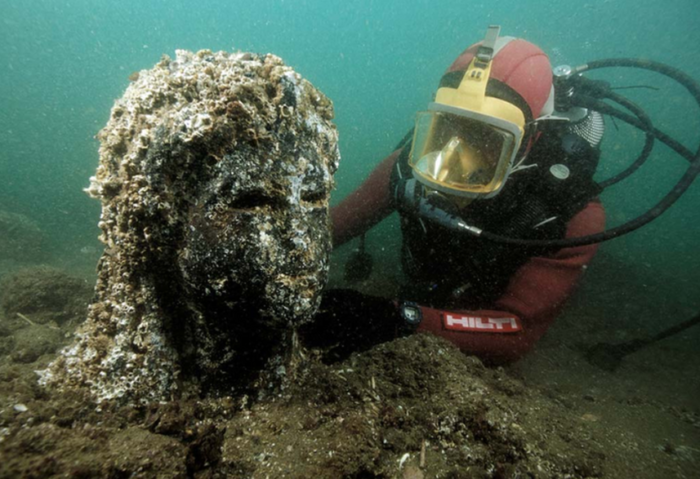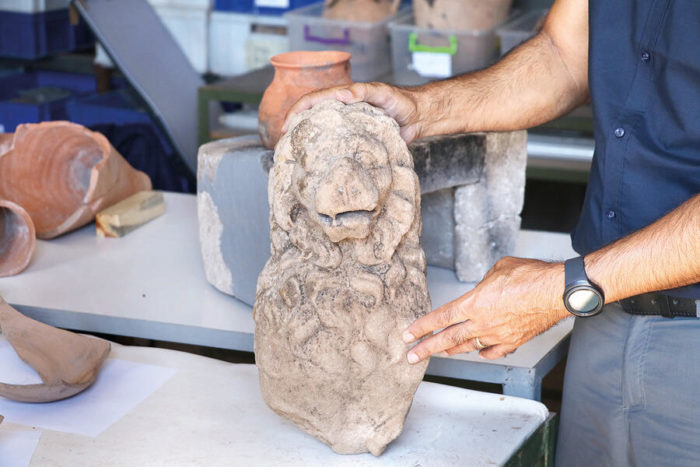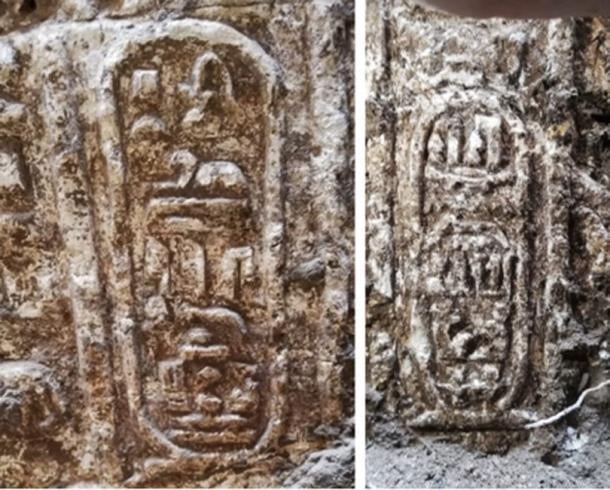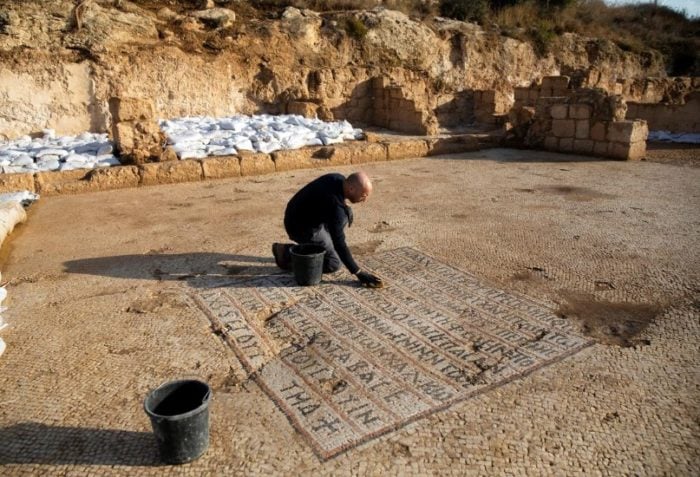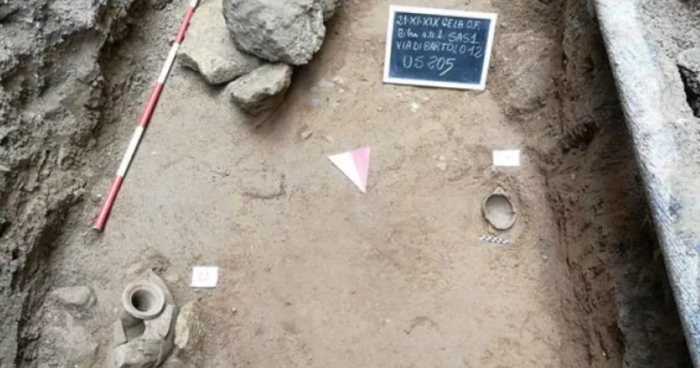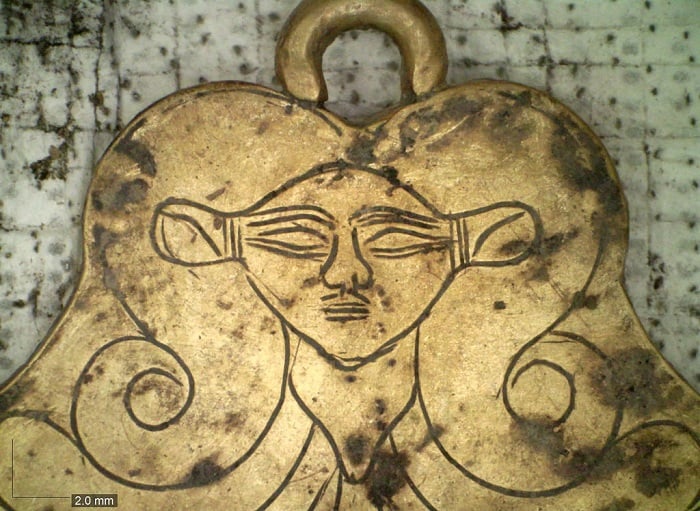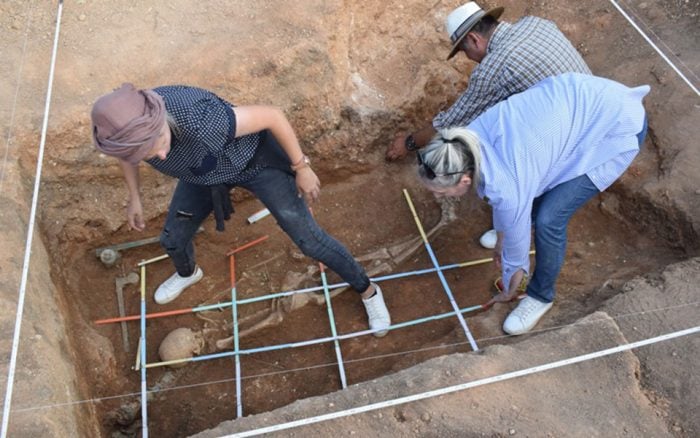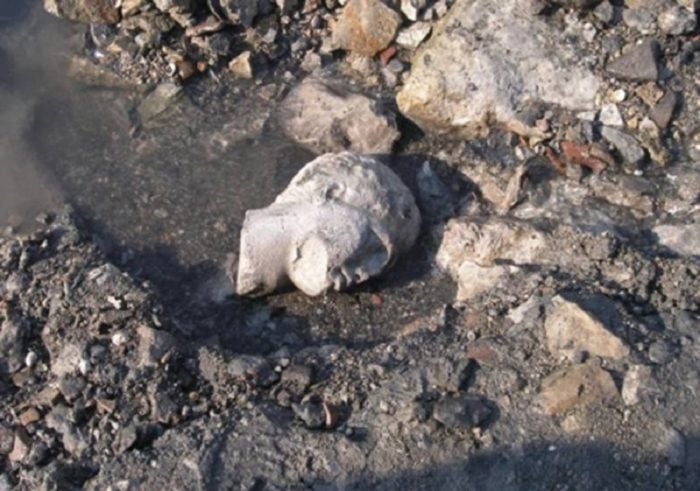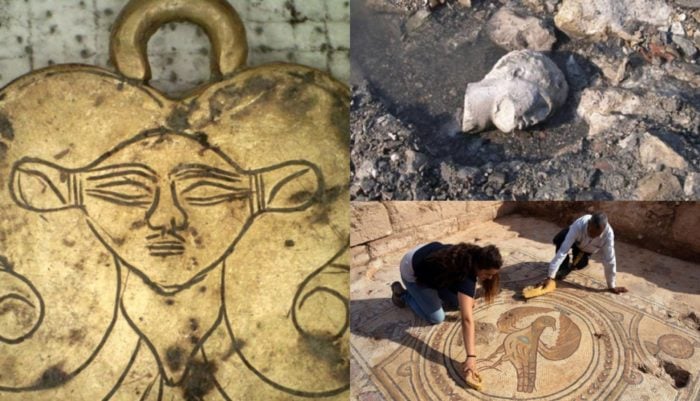
Archaeologists from a number of countries from around the globe found great success in Greece, Egypt, Israel, Italy, Turkey and elsewhere this year, managing to unearth some spectacular pieces which had either been lost or completely forgotten by humanity’s collective memory.
Below is a list of only some of the most important discoveries made in the region this year which have a direct or indirect link with periods of Greek antiquity.
Greek temple and treasure-laden ships found at the sunken city of Heracleion
An ancient Greek temple, as well as a number of ships carrying great treasure, were discovered this year by archaeologists along the Mediterranean coast of Egypt in what is now the sunken city of Heracleion.
Heracleion was known to have been a major port city in the Mediterranean during ancient times, but its actual location had been lost for centuries. Archaeologists discovered it in underwater research in 2000 and there have been constant efforts to uncover its ancient secrets ever since that time.
The remains of this ancient Greek structure in the city are proof of the significant Greek presence in the region.
Remains of Graeco-Roman Senate Unearthed in Pelusium, Egypt
The remains of a large structure dating back to Hellenistic and Roman times was unearthed this year near the town of Tel al-Farma, in Egypt’s Sinai peninsula, known in antiquity as Pelusium.
The remains of the building date back to the eras between the Hellenistic and the Roman period of Egypt, and according to archaeologists, it was used as the main Senate building of the region during the era of Roman rule in north Africa.
Archaeologists also believe that the name the Romans used for the city, Pelusium, derived from an earlier Greek transliteration of the name that native people of the region used for their city.
Hellenistic-era Lion Statue Discovered in Assos, Turkey
Turkish archaeologists this year discovered an impressive statue of a lion dating back to Hellenistic times in the ancient Greek city of Assos (today known as Behramkale in Turkish), in the province of Çanakkale.
The lion was discovered during archaeological excavations in a building complex which served as an inn approximately two millennia ago.
The city of Assos used to be an important town for the region during ancient Greek, Hellenistic, Roman and Byzantine times. It is now just a small town, but it is surrounded by a massive number of important archaeological ruins.
Temple of Ptolemy IV Philopator unearthed in Sohag, Egypt
A group of Egyptian archaeologists accidentally discovered the ruins of a temple dedicated to Ptolemy IV Philopator, the fourth Pharaoh of Ptolemaic Egypt in 2019. The ancient building was constructed during the time of the Hellenistic Kingdom of Egypt, which was established after Alexander the Great’s conquest of the country.
The archaeologists were actually searching for a sewage infrastructure system when they accidentally came across the ruins of the temple, which was dedicated to this leader of the Greek kingdom of Egypt, who governed between 221 and 204 BC.
The archaeological work continued and they gradually unearthed additional parts of the structure, including many stones and inscriptions.
Byzantine Church Dedicated to Mysterious Martyr Discovered in Israel
After three years of painstaking excavations, a Byzantine-era Christian church with spectacular, well-preserved mosaics and frescoes was unearthed in 2019 near Jerusalem.
The fascinating findings include some Greek inscriptions as well, with one of these stating that the church was dedicated to a ”Glorious Martyr.” No other evidence has so far been found anywhere on the site to suggest who this martyr may have been, however.
Archaeologists estimate that the church was actively used by pilgrims in approximately the year 600 AD. They also made the jaw-dropping discovery of an amazingly detailed inscription stating that Byzantine Emperor Tiberius II Constantine himself had funded an expansion of the church.
Ancient Greek Necropolis Unearthed in Gela, Southern Italy
Local public utilities workers from the city of Gela in Sicily unearthed an entire Greek necropolis under their feet in November of this year.
Archaeologists confirmed that the skeletons and the associated grave objects found in Gela dated between 700 and 650 BC, precisely the time when the first Greek settlers colonized this Mediterranean island.
The necropolis which was unearthed is believed to be of very significant scientific importance, as it will offer valuable information to archaeologists about aspects of the ordinary lives of the first Greek settlers in Sicily which have remained unknown until this time.
Ancient Greek and Roman Cemetery Discovered in Egypt
An ancient Greek and Roman cemetery was discovered in Ismailia, Egypt in November 2019 as well.
The Ministry of Antiquities’ mission working in Ismailia’s Hassan Dawood archaeological area, unearthed a part of a multi-layered cemetery “dating back to the Roman, Greek, and pre-dynastic eras,” according to the country’s Ministry of Antiquities.
The cemetery interestingly had multiple levels, with the upper levels dating back to ancient Greek and Roman times, while the lower are from Egypt’s pre-dynastic eras.
Spectacular Gold-Lined Tombs Discovered in Pylos, Greece
In December of 2019, two American archaeologists unearthed two magnificent tombs at the site of the ancient city of Pylos on the Peloponnesian Peninsula which belong to a period known as Late Helladic IIA, which lasted from 1600 to 1500 B.C.
The discovery suggests that Pylos played a surprisingly prominent role in early Mycenaean civilization, something which had not been entirely clear up until now. Although the tombs had been looted in antiquity, archaeologists reported that they had recovered thousands of pieces of gold foil, remnants of the sheets of gold which had once lined the tomb floors and would have lent a spectacular gleam to the darkened chamber.
The larger of the two tombs is 12 meters (39 feet) in diameter and the smaller is 8.5 meters (28 feet). Both were originally built in a beehive shape known as a “tholos,” which is Greek for ”dome,” but had collapsed at some point.
Intact Tomb From First Century BC Discovered in Kozani, Greece
An intact tomb dating to the first century BC in the area of Mavropigi in West Macedonia’s Kozani region was discovered in June of 2019 by a group of Greek archaeologists.
A statement from the local Ephorate noted ”During the ongoing excavations of the Ephorate of Antiquities of Kozani in the Mavropigi lignite mine, within the partially-demolished modern settlement of Mavropigi, and specifically under the foundation of a house, important grave goods were discovered dating to the end of the 1st century BC.”
The broader region of Western Macedonia is covered in archaeological sites of great historical interest, and many excavations are currently underway to unearth even more significant discoveries, from the many different eras of Greek history.
Artifacts Discovered at the Site of Great Naval Battle of Salamis
In June of 2019, marine archaeologists discovered underwater artifacts at the site of an ancient building where the great naval battle of Salamis was fought in the Saronic Gulf in 480 B.C. This major discovery was made during excavation work approximately one year ago in the shallow waters off the coast of Salamis.
The researchers said that the structure they found would likely have been one of the main public buildings of the ancient city, located at its lowest point — in the port area. The team found ceramics, statues, columns or pillars and other features relating to the building, along with marble sculptures.
One of the most spectacular finds was the exquisite, nearly-intact head of a statue of an athlete or god, which the Ministry said appeared to be from the fourth century B.C.
See all the latest news from Greece and the world at Greekreporter.com. Contact our newsroom to report an update or send your story, photos and videos. Follow GR on Google News and subscribe here to our daily email!



